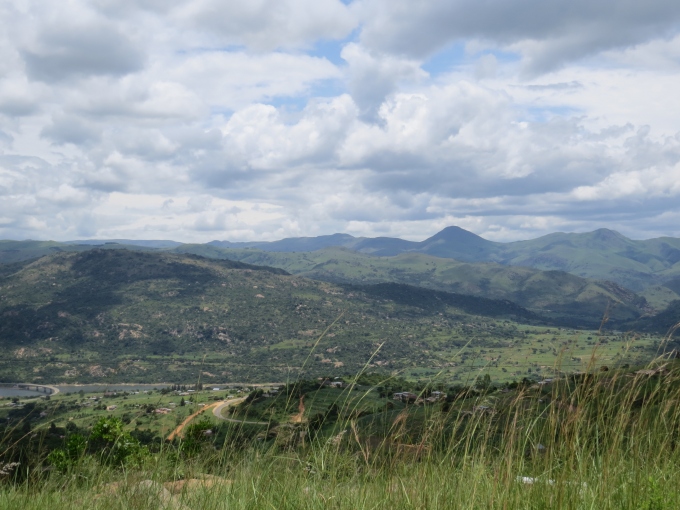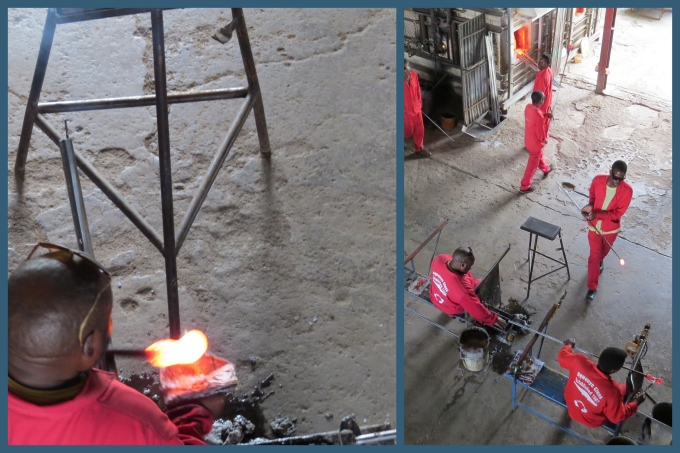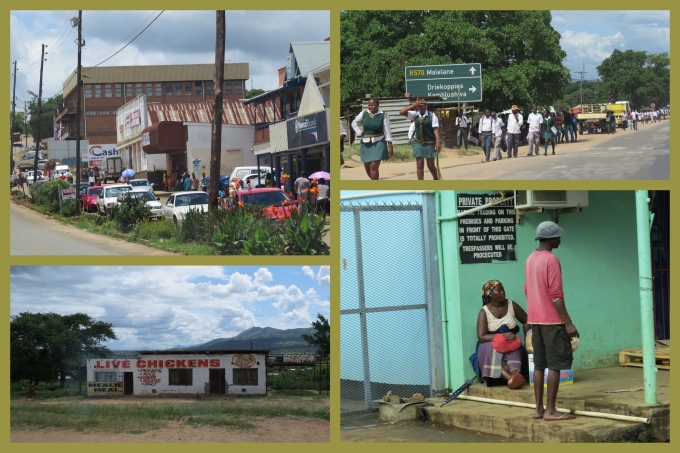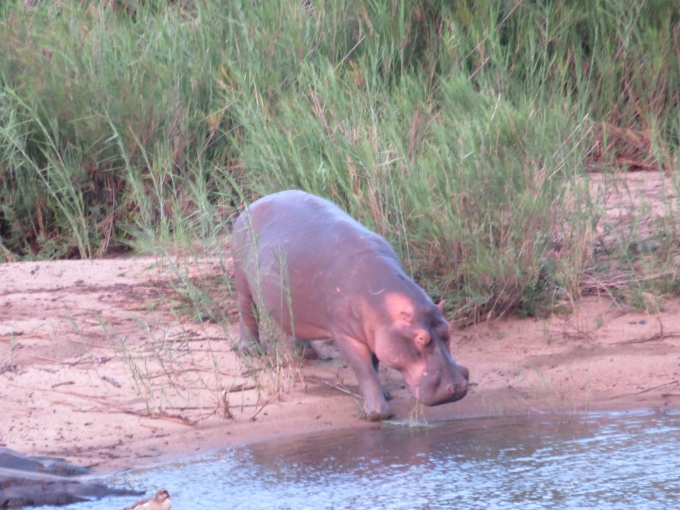Our travel isn't just about wild animals and birds, we're also interested in local crafts and culture. First of all, Swaziland is a kingdom, one of the few remaining peaceful monarchies in the world. King Mswati III rules Swaziland with the help of several advisers. There was a picture of the king in an honored place in every place we visited, whether it be a public building or a tiny stall in the crafts market. The country is bankrupt; there is 40+% unemployment; 26%+ of the population is HIV positive and TB is rampant. Still, the people seem happy.

I'd read about Swazi Candles and had seen some of their products. This is a Swasi women's endeavor and profits go back to the community. We watched candles being made, then browsed in the shop which was well-laid out and appealing. It wasn't only candles. There were heaps of handmade Swazi baskets and other craft offerings. This is our kind of place to buy souvenirs and we stocked up on elegant, African-motif candles and baskets.

We checked out Kwazi Swazi, a more conventional gift shop which offered the usual t-shirts and souvenirs, but not much made in Swaziland. They did, however, have some distinctive items and we ended up buying a carved, stylized zebra head which we thought would look great as a decoration on the boat.

We headed to the colorful open craft stalls in the same complex. We enjoyed looking, but didn't buy much. I fell in love with some of the batiks and the six foot tall carved giraffes were most appealing. Alas, I couldn't talk the captain into moving any tall animals aboard the boat.

We moved along Route 103 in the Ezulwini Valley, a route noted for its shops. We stopped at the local craft market. There was stall upon stall of crafts, mostly identical … carvings, batiks, jewelry, cheap souvenirs. It was hot and humid as we moved from cramped, tiny stall to stall. The vendors welcomed us warmly and asked us to look at their offerings, trying hard to make a sale. It was hard to refuse, but we were sweaty and thirsty and ended up buying nothing, but a small batik print. It was simply too hot to shop.

The currency in Swaziland is the lilangeni … the plural is emanlangeni (E). The Swazi currency is tied 1:1 directly to the South African rand. Conveniently, we could use rands to pay for anything, but invariably received emanlangeni in change, which is not accepted anywhere but in Swaziland. This proved to be a bit of a problem when we left the country and constantly confused the two currencies to David's chagrin. The national languages, by the way, are English and Swati. We practiced saying hello in Swati - Sawubona (hello to one person) or Sanibonani (if two or more people).

In the afternoon, we visited the Swazi Cultural Village for a tour of a replica village as well as a traditional singing and dancing performance. Though the guide was quite informative, there was nothing in the “traditional village” except several thatched huts, and some of them were missing. The village was sterile. There were no accessories, no embellishments, no people, no signs of life … a deserted village, a grouping of empty huts.

We were asked for money at every turn. Beyond the admission fee, we were asked to: Tip the guide, please. Tip the singers and dancers, please. Buy some crafts, please. It was hard to say no, but it left a sour taste in our mouths. Some of the singers and dancers were quite enthusiastic and we enjoyed their performances.

Other participants, however, were ho-hum about the whole thing, arriving late and appearing totally bored throughout the performance. We felt as if our presence was an imposition and they obviously had much better things to do than entertain guests and share their culture.

We ended the day at the Mantenga Lodge, not far away from the cultural village. The room was nice and, thankfully, air-conditioned, since the heat and humidity were getting to us. Dinner was at the lodge's restaurant and it was an elegant outdoor affair though casual.

The view of Execution Rock was exceptional from our seats in the restaurant. We'd just learned at the cultural village that the Swazis used this rock as their form of punishment for major crimes such as murder, adultery and witchcraft. They dragged the guilty parties to the top of the rock and forced them to jump off to their deaths. By the way, Swazi men were free to practice polygamy and still are. King Mswati III has 15 wives and counting. Who'd have time for adultery?

The question is, I guess, did we really experience Swazi culture? The well-choreographed tour and presentation at the Cultural Village was disappointing. Don't get us wrong. We enjoyed our time in Swaziland. It's a beautiful country, but we came away knowing not much more about the culture than we knew from our research before arriving.
We're heading to the renowned Kruger National Park tomorrow. Are you ready to come along?




















